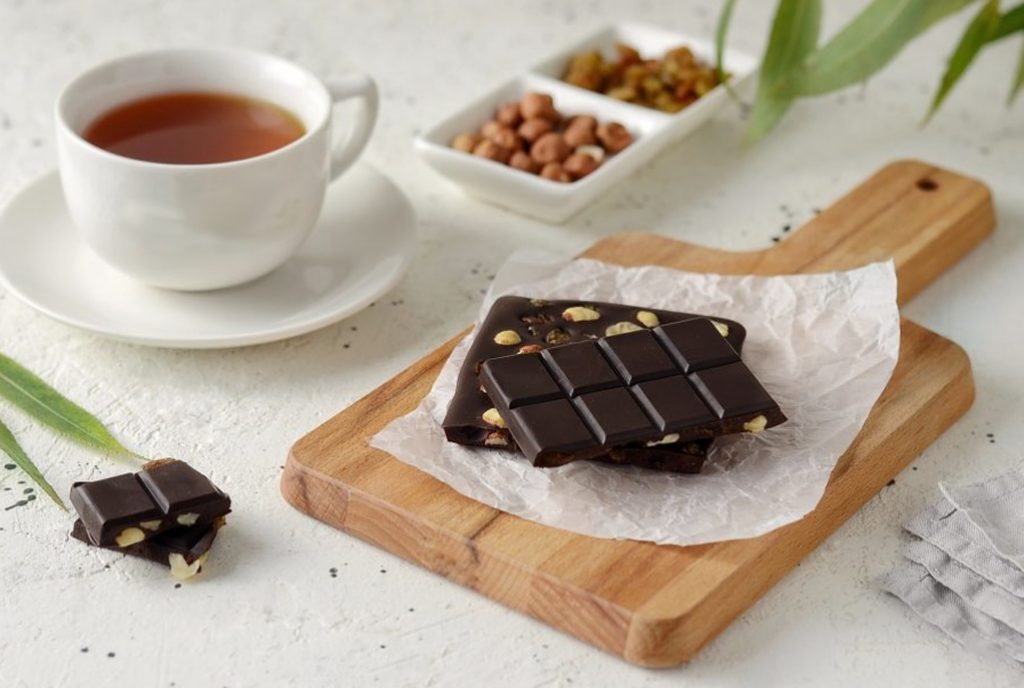Hurdles and solutions for producers of plant-based confectionery
The market for plant-based products is growing and with it, the demand for plant-based confectionery.
Valued at USD 1:23 billion in 2022, the plant-based confectionery market is expected to expand at a compound annual growth rate (CAGR) of 9.9% from 2023 to 2030.1
Different sectors in the market have already seen immense growth. Plant-based chocolate, for example, grew at a CAGR of 13% between 2018-2022.2 By 2032, this billion-dollar market is projected to quadruple to USD 4 billion, experiencing a significant 15.5% CAGR.3
Advantages of producing plant-based confectionery
As well as being profitable, producing plant-based sweets (instead of animal-based ones) is attractive for several reasons.
It can allow for:
- Cost savings: With a plant-based formula, costs can often be saved, for example, in the purchase of ingredients like margarine, which is significantly cheaper than butter.
- Improved shelf-life: The shelf life of confectionery can, in many cases be improved. For example, when eggs are replaced by plant-based alternatives.
- Reduced allergens: Apart from possible traces, purely plant-based sweets are egg-, lactose-, and gelatine-free, which means that, often, they meet the criteria for being free from certain allergens, and halal and kosher – useful for export markets.
Opportunities, challenges, and solutions
Despite their advantages and recent growth, conversations with consumers and producers show that plant-based sweets still have untapped potential and hold opportunities for improvement.
Switching to an all-plant-based formula can bring challenges, depending on the product, ingredients, and the final look of the product.

Let’s look at four assortment strategies for plant-based confectionery. Here, we’ll uncover the most common challenges for producers in marketing products or switching to plant-based ingredients, and reveal the solutions required for product improvement and consumer satisfaction.
Scenario 1. ‘Vegan and proud’
The formula is plant-based and the product is labeled as ‘vegan’.
Many well-known confectionery brands already have dedicated plant-based product lines. They use labels on packaging or price tags to indicate their products’ status, like ‘vegan’, ‘plant-based’, or a symbol, such as the V-Label.
These labels ensure that clued-up consumers can easily identify plant-based confectionery products. The opportunities for successful marketing of these products lie primarily in the areas of product development and communication.
- Compelling taste: The product should stand out from the competition in terms of taste, price, and packaging. Place special emphasis on taste. Often, consumers give new products one chance to impress them – if the taste and texture are not convincing, they will not buy it a second time. Therefore, have the product tested sufficiently in advance – in the company, among family and friends, or directly by your target consumer group.
- Targeted communication: Define your target audience and engage them with a specific launch campaign. Intuitive placement of the product at the point of sale is also important. For example, the vegan chocolate varieties from Lindt and Ritter Sport are sometimes positioned side by side with their animal counterparts in food retail, and at other times, on a separate shelf.
ProVeg recommends:
- Labeling plant-based products clearly to signal to relevant customers. However, where you place a plant-based label or symbol – prominently placed on the front, or recognizable only upon closer inspection on the back – will depend on your intended target audience.
- As a producer, experiment with optimal product placement together with the retailer, for example, as part of a promotional period.

How ProVeg can support you:
- ProVeg has a dedicated test community in Germany with more than 20,000 plant-based, flexitarian, and omnivore members. They can help you evaluate your products in terms of taste, packaging, image, and visibility.
- ProVeg offers cooperation partners visibility on various communication channels aimed at a veggie-interested target group. For example, the promotion of selected products on Instagram, placement in the Veggie Challenge, or recipe collaborations.
Scenario 2. ‘Unintentionally vegan’
The formula is vegan, but the product is not labeled as vegan.
Some confectionery manufacturers have products with recipes that are already fully plant-based but are not labeled as vegan. This might be because the recipe has never included animal ingredients, or they have been replaced for other reasons. For instance, lard was removed from the recipe for Oreo cookies to make the product kosher.
Without appropriate labeling, these products are not immediately recognizable as being vegan, which means that some plant-based, flexitarian, or conscious consumers may overlook them.
ProVeg recommends:
- Labeling plant-based products clearly and simply, for example, using a V-label or similar ‘vegan’ symbol on the back of the packaging. This allows plant-forward consumers to look for plant-based products, but reduces the chance of putting off other consumers.
Scenario 3. ‘Easy wins’
The product contains only a few, easily substitutable animal ingredients.
Some confections contain just a few animal ingredients, like butterfat in certain dark chocolates.

For these products, it’s worth thoroughly examining the recipe for essential ingredients and evaluating the diverse range of functional plant-based ingredients available for taste, texture or shelf-life.
Scenario 4. ‘Challenge accepted’
Animal ingredients make up the majority of those in a confectionery product.
Some sweet products are defined by their animal ingredients – either because an animal-based ingredient is mentioned in the name (for example, ‘butter cookies’ or ‘milk rolls’) or because the recipe is designed around the properties of the animal ingredients. For example, in some types of baked goods chicken eggs take on different functions that can only be replaced by a combination of vegetable ingredients.
ProVeg recommends:
- For products like butter biscuits and milk slices, build a new plant-based product line for those consumers who loved the animal-based original but no longer want to consume it for personal reasons.
- If animal ingredients are a central part of the current recipe, product developers should experiment with different alternatives. Take a look at ProVeg Incubator start-ups working to develop innovative ingredient alternatives.
The plant-based confectionery sector can be shaped in many ways, depending on your goals – clever marketing, minor formula adjustments, or ingredient overhauls can open up new opportunities. Whatever your desired outcome, ProVeg is here to advise you on the switch to plant-based.
Plant-based swaps for animal-based ingredients
Ingredients have different functions. They can, for example, change the texture, structure and stability of a confectionery product. Ingredients also influence sensory aspects such as appearance, mouthfeel, taste, or scent and determine nutritional values. In traditional confectionery production, many ingredients of animal origin are used, such as milk, milk powder, butter, clarified butter, eggs, honey, beeswax, or gelatine.
As a producer, it helps to better understand the ingredients used to produce plant-based confectionery and those used in the transition from animal to plant-based recipes.
Below, you’ll find a few of the most common animal-based ingredients used in confectionary and advice for plant-based swaps.
Chocolate
- Milk powder is used in milk chocolate to give an appealing viscosity, while lactose increases the sweetness of the product, and milk fat contributes to mouthfeel.
- Because of their sweetness, sugar and syrups can be used as plant-based swaps for lactose, which can also save production costs. By increasing the cocoa butter content, viscosity can be adjusted accordingly. Since cocoa butter is an expensive ingredient, alternative vegetable fats and combinations of these can be used to mimic this property.
Sugar confectionery (candy)
- In gummy candy production, gelatin provides texture, influencing mouthfeel. Pectins, agar-agar, or carrageenan can form similar textures. However, when replacing gelatin, a 1:1 substitution is not possible, so it is best to determine the appropriate combination of different substances.
- Carnauba wax works well as an alternative coating agent to beeswax.

Sweet pastry
- Replacing butter with plant-based margarine can be done in many products without any further recipe adjustment.
- Eggs, on the other hand, can have different functions in baked goods. As a result, an egg often cannot be replaced 1:1, but a suitable combination of plant-based ingredients must be found. Replacing fresh eggs can have processing advantages, as plant-based raw materials in powder form can be stored for longer. However, some steps may have to be adjusted due to the change from dry to wet.
- As an emulsifier, soy lecithin supports the formation of a softer crumb and counteracts staling. Plant-based fibers have a thickening effect and can also counteract staling.
- Plant-based hydrocolloids such as xanthan gum, guar gum, and pectin support the texture of baked goods through their water-binding properties.
- There are also plant-based alternatives for milk powder. In their function of protein enrichment and prevention of product dehydration, milk powder can be partly replaced by plant-based protein powders, for example, soy, fava bean, or pea.
Note:
Proteins or fats from novel technologies (like precision fermentation) are almost identical in taste and function, making them one of the most promising innovations for plant-based alternatives. Get in touch for more information!
Getting V-Label certification
To have confectionery certified by V-Label, you need animal-free ingredients and also an appropriate manufacturing process.
No separate production and/or production line/plant is necessary to produce V-label certified products. This greatly reduces extra capital expenditure.
If food that contains animal ingredients is produced before V-Label products, the machinery must be cleaned accordingly. Otherwise, the risk of cross-contamination is too great. The exact process of this cleaning depends on the produced food and varies from facility to facility.
Here are a few basic cleaning tips from the V-Label team:
- Production lines with dry products are easier to clean than those where high-viscosity or fatty foods are manufactured.
- For dry products, depending on the design of the facility, compressed air and a brush are often sufficient.
- For high-viscosity or fatty products, a CIP (Clean-In-Place) cleaning according to allergen management standards is often recommended.
Special case: chocolate
There are some products, like chocolate, for which the equipment cannot be easily cleaned after each product batch. Thorough cleaning after each production batch would be costly, so the machinery is rinsed with plant-based chocolate until the level of contaminants can be controlled.

This ‘flushing chocolate’ is not processed into the vegan product but can be used as rework for other non-vegan products. After this, the actual production of vegan chocolate begins.
The specific cleaning procedure for a particular facility can be discussed in a preliminary conversation with our V-Label team.
Allergen labeling
We must emphasize that the V-label or the terms ‘plant-based’ or ‘vegan’ do not replace allergen information in confectionery. V-Label products can also contain traces of allergens. The certification allows for unintended contamination in production up to 0.1%.
Plant-based confectionery: unlocking opportunities
The plant-based confectionery market presents an exciting frontier for producers, marked by steadfast industry growth. Are your confectionery products currently taking advantage of all the opportunities this market offers?
ProVeg can offer tailored solutions for every scenario – from confectionery that is already marketed as plant-based to products largely made up of animal-based ingredients. We’re also available to assist you with questions regarding V-Label certification, B2B marketing, and product testing. Additionally, our Incubator provides expertise and connections to innovative start-ups.
Explore the New Food Hub for ongoing insights and reach out to the below team members for additional support – because the move to plant-based isn’t just a switch; it’s a delectably sweet transformation, and ProVeg is here to make it a resounding success.
Click here to read in German.

Virginia Cecchini Kuskow.
Project Manager – Corporate and Institutional Engagement.
Contact: [email protected]

Sebastian Rückert.
Corporate and Institutional Engagement Assistant.
Contact: [email protected]

Linda Ding.
Product Development.
Contact: [email protected]
References
- Vegan confectionery market report, (2030). Grand View Research. Available at: https://www.grandviewresearch.com/industry-analysis/vegan-confectionery-market. Accessed 2023-12-05.
- Vegan chocolate market size, (2023). Future Market Insights. Available at: https://www.futuremarketinsights.com/reports/vegan-chocolate-market. Accessed 2023-12-05.
- Chocolate Market Report, (2022). Grand View Research. Available at: https://www.grandviewresearch.com/industry-analysis/chocolate-market. Accessed 2023-03-10.



